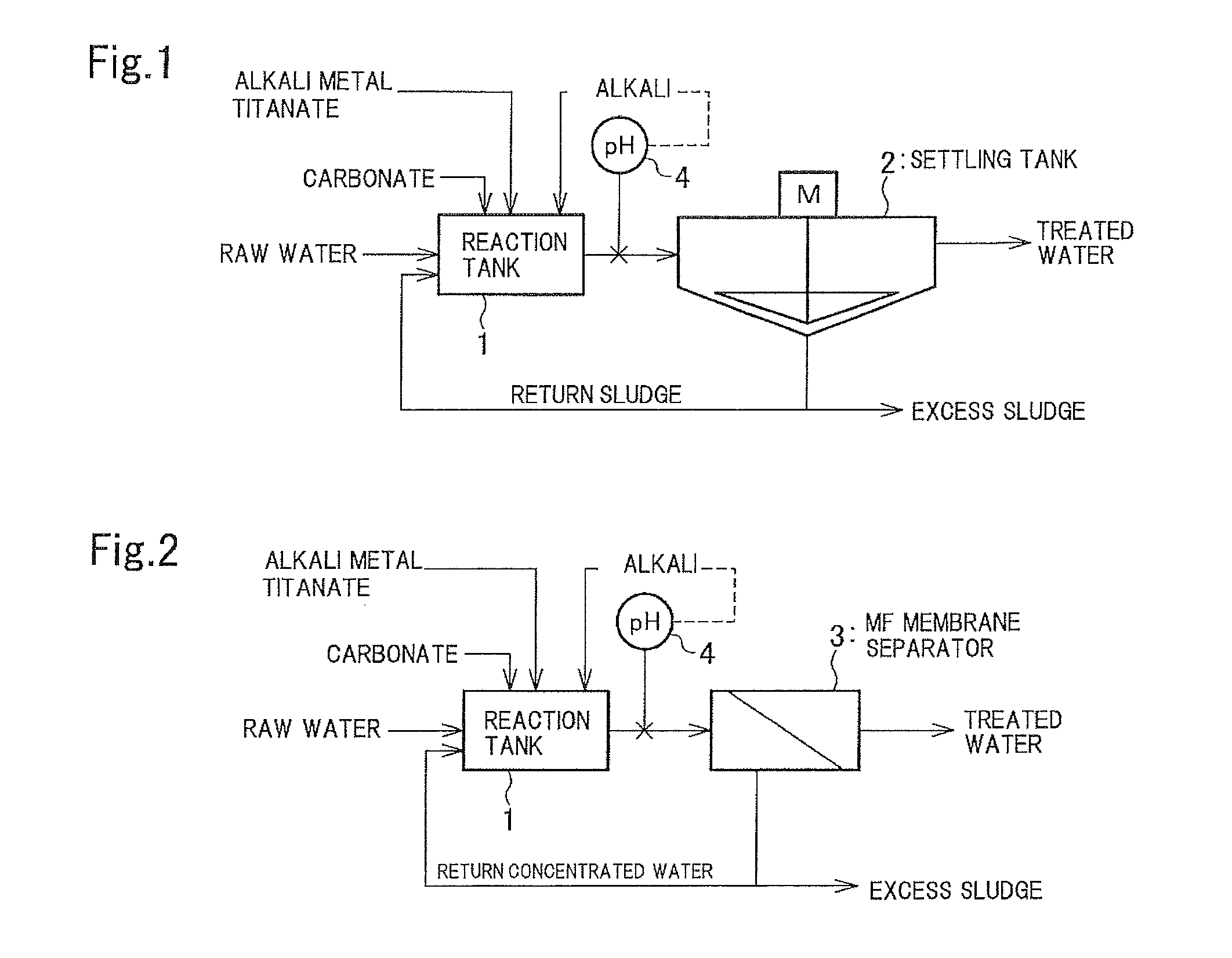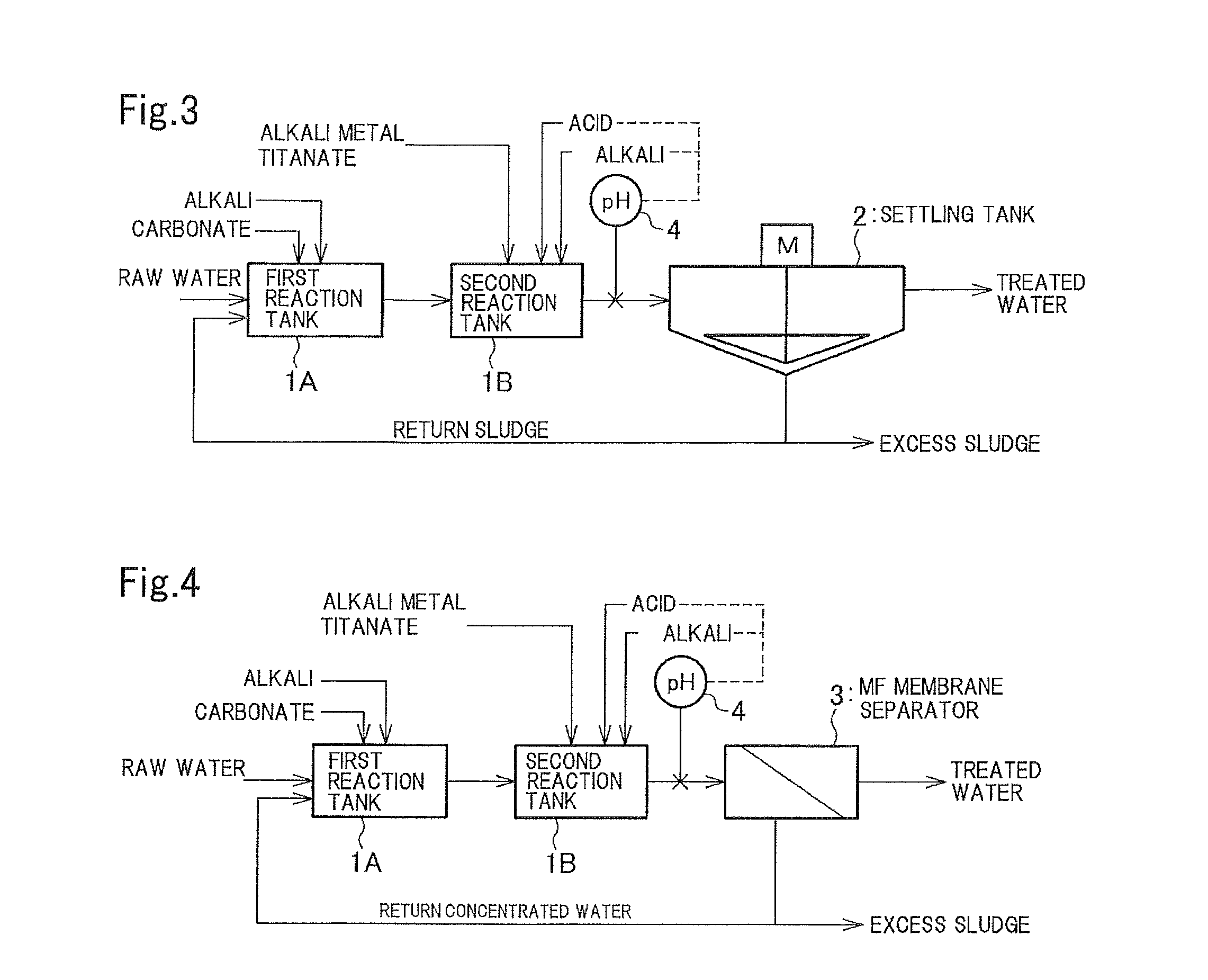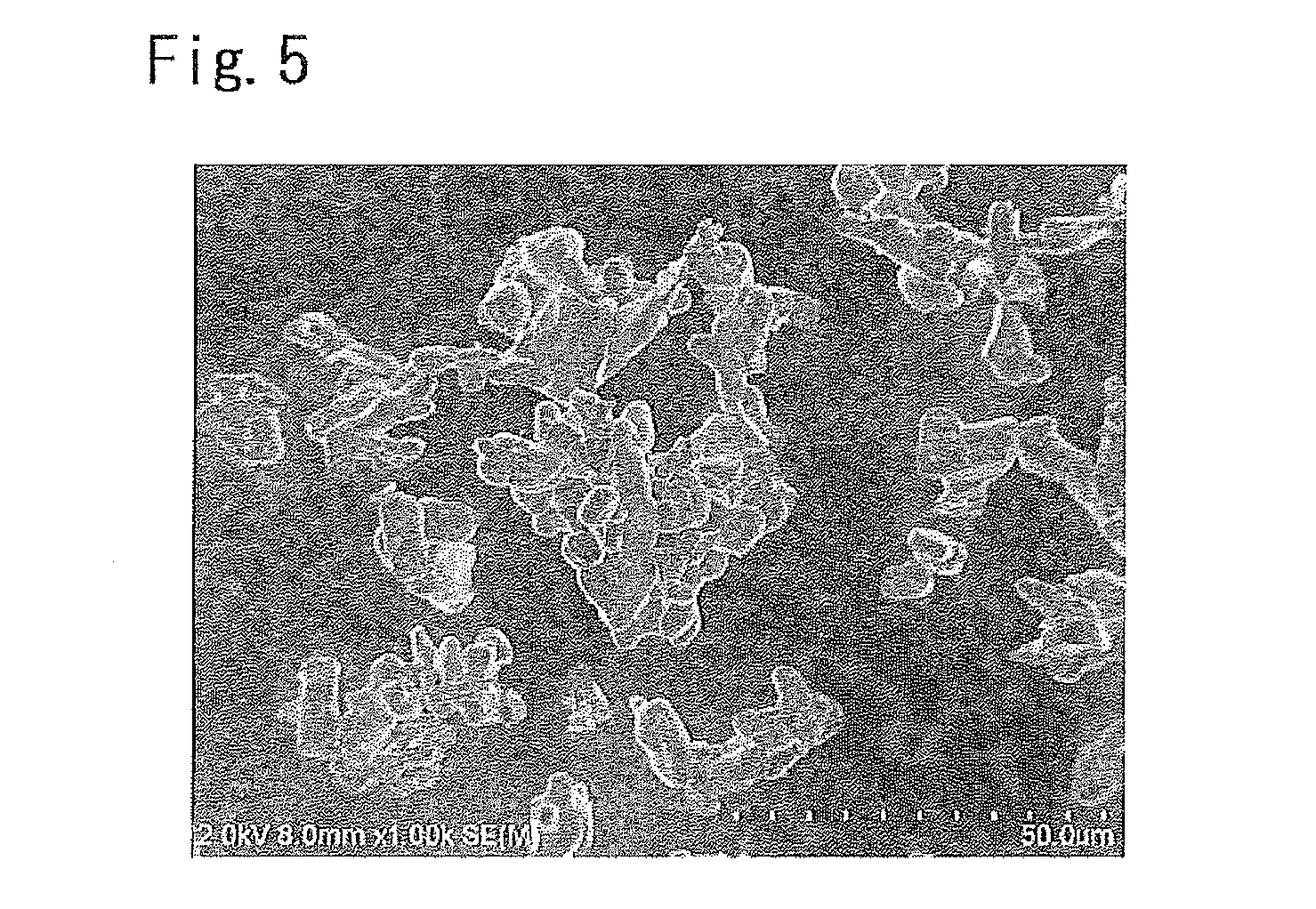Method and apparatus for treating wastewater containing radioactive strontium
a radioactive strontium and wastewater technology, applied in multi-stage water/sewage treatment, alkali titanates, separation processes, etc., can solve the problems of increasing the cost, difficult to ensure sufficient crushing strength, and difficult to stably ensure the df (decontamination factor) value of radioactive strontium in treated water, so as to reduce the radiation dose of treated water, reduce the concentration of wastewater, and reduce the effect of radiation dos
- Summary
- Abstract
- Description
- Claims
- Application Information
AI Technical Summary
Benefits of technology
Problems solved by technology
Method used
Image
Examples
synthetic example 1
Synthesis of Potassium Dititanate
[0065]In a Henschel mixer, 418.94 g of titanium oxide and 377.05 g of potassium carbonate were mixed. An obtained mixture was mixed for 0.5 hours in a vibration mill while being crushed.
[0066]Fifty grams of an obtained crashed mixture was filled in a crucible and was calcined at 780° C. for 4 hours in an electric furnace. A calcined product was crushed in a hammer mill, whereby potassium dititanate having such a shape that a plurality of bumps extended in irregular directions was obtained. The average particle size thereof was 20 μm.
examples 1 to 6
[0068]In Comparative Example 1, powdery potassium dititanate obtained in Synthetic Example 1 was added together with Na2CO3 and NaOH such that the amount of added potassium titanate was 200 mg / L or 500 mg / L, followed by reaction for a time shown in Table 2 in a stirrer-equipped reaction tank. Thereafter, a reaction solution was subjected to MF membrane separation treatment as is the case in Comparative Example 1. The quality of obtained treated water was as shown in Table 2.
examples 7 and 8
[0069]In Comparative Example 5 and 6, slurry (10% by weight powdery potassium dititanate) prepared by suspending powdery potassium dititanate obtained in Synthetic Example 1 in a 0.1 mol / L KCl solution was added such that the amount of added potassium titanate was 500 mg / L, followed by reaction for a time shown in Table 2 in a stirrer-equipped reaction tank. Thereafter, a reaction solution was subjected to MF membrane separation treatment as is the case in Comparative Examples 5 and 6. The quality of obtained treated water was as shown in Table 2.
TABLE 2Amount of addedReactionTreated waterpotassium titanatetimeSrCaMgmg / L(minute)mg / Lmg / Lmg / LComparative0—1.330.71Example 1Example 1200100.754——Example 2200300.489——Example 3200600.4350.67Example 42001200.380.76 0.12Example 5500100.396——Example 65001200.0810.77Example 7500100.381——Example 85001200.0780.69
[0070]Table 2 shows clearly that, according to the present invention, the radiation dose of treated water can be effectively reduced in ...
PUM
| Property | Measurement | Unit |
|---|---|---|
| particle size | aaaaa | aaaaa |
| particle size | aaaaa | aaaaa |
| particle size | aaaaa | aaaaa |
Abstract
Description
Claims
Application Information
 Login to View More
Login to View More - R&D
- Intellectual Property
- Life Sciences
- Materials
- Tech Scout
- Unparalleled Data Quality
- Higher Quality Content
- 60% Fewer Hallucinations
Browse by: Latest US Patents, China's latest patents, Technical Efficacy Thesaurus, Application Domain, Technology Topic, Popular Technical Reports.
© 2025 PatSnap. All rights reserved.Legal|Privacy policy|Modern Slavery Act Transparency Statement|Sitemap|About US| Contact US: help@patsnap.com



